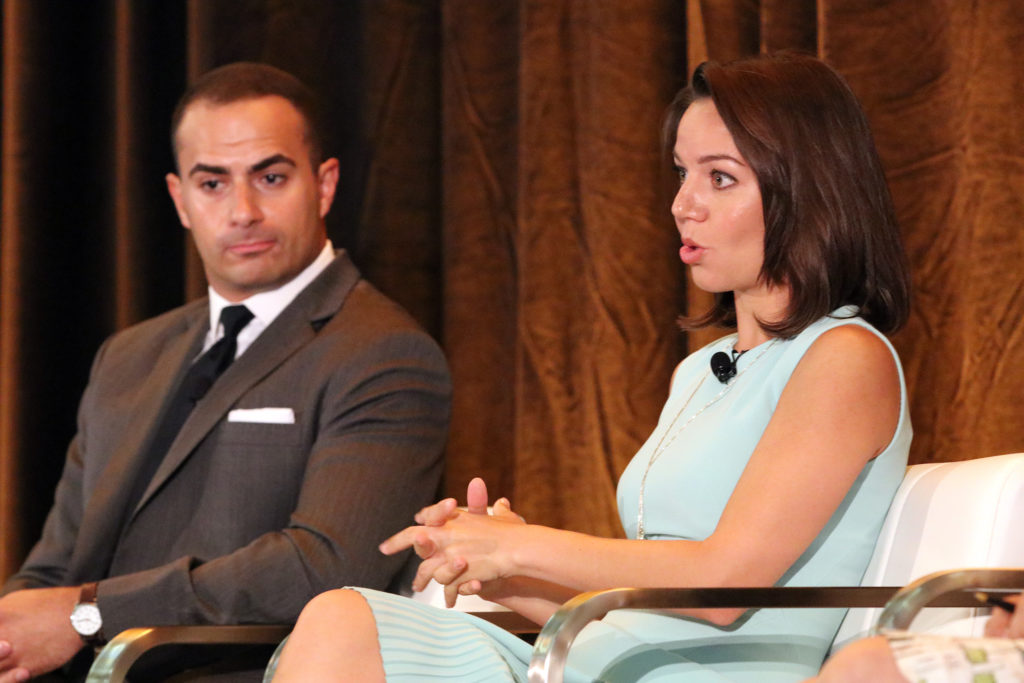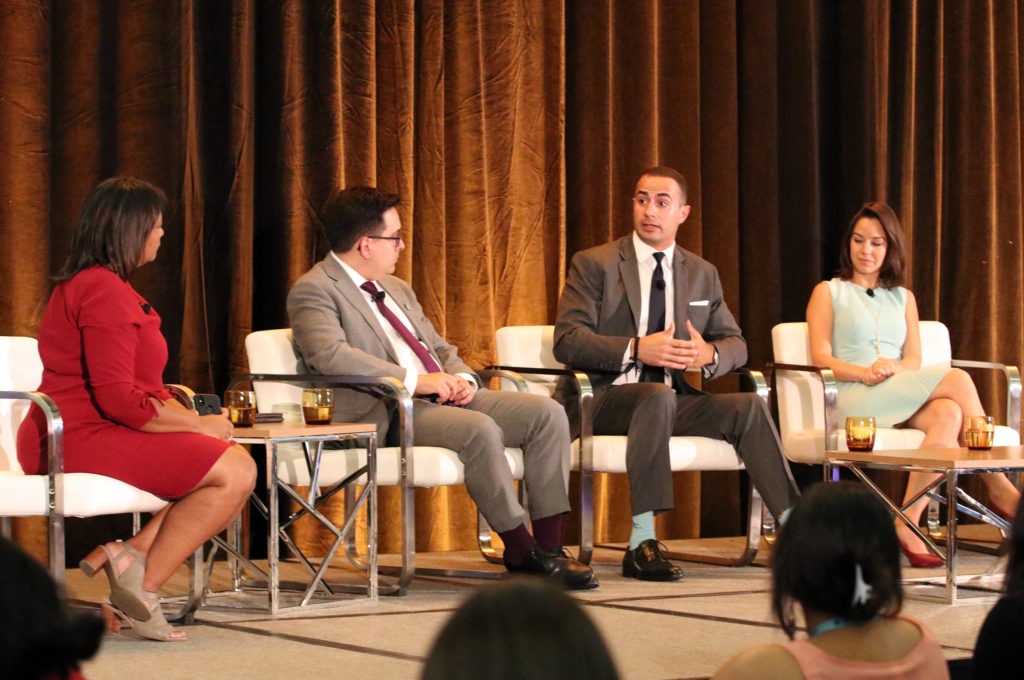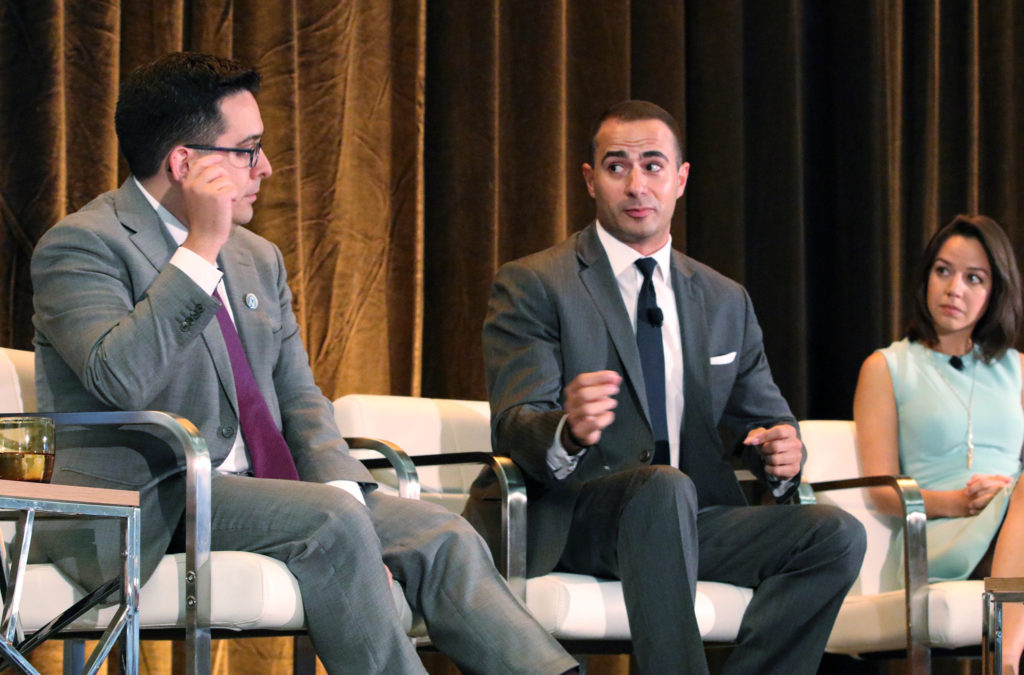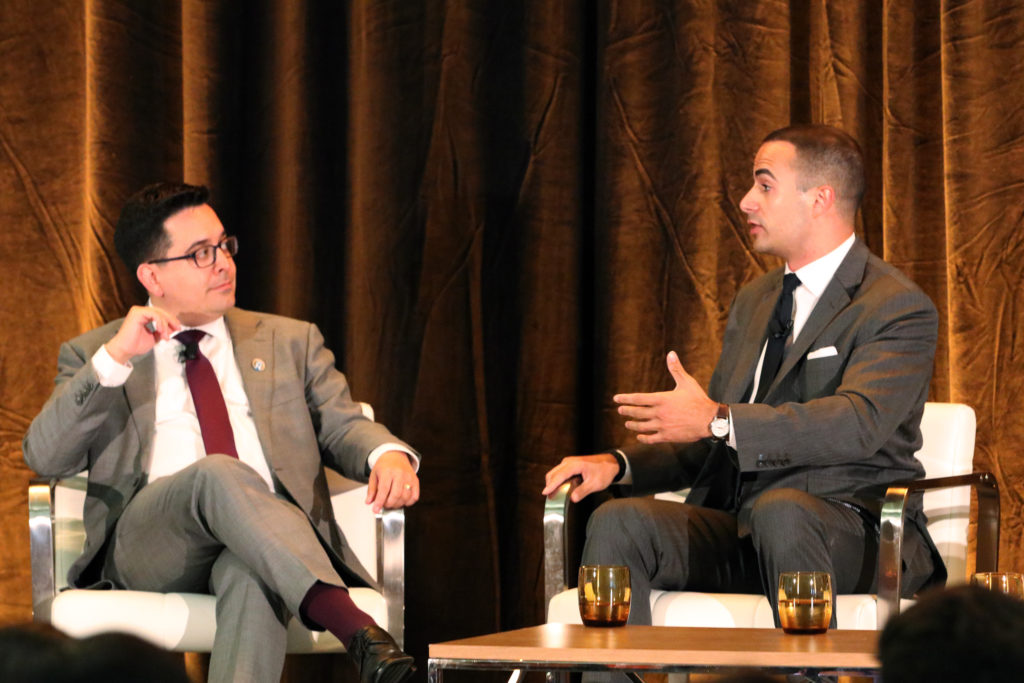Latino journalists face increased challenges in the Trump era
When Cecilia Vega accepted a job covering President Donald Trump, her mother questioned the decision.
“My mom told me— ‘why would you do this to yourself? You’re literally all three things he hates: a woman, a Mexican and a journalist and it is dangerous for you,” said Vega, who is the White House correspondent for ABC News.
Her reply: “Mom, what better person to sit in the front row of that briefing room then?”
Vega, one of six panelists Friday during a 2018 National Association of Hispanic Journalists’ conference panel in Miami on Latinos covering Trump’s White House, said coverage of the Trump administration has been challenging for journalists.
But it’s been even tougher for Latinos, panelists said, and become a shared experience among the six who spoke during NAHJ’s annual conference
They said they are labeled as “enemies of the public” by Trump and face an unimaginable kind of pressure, especially because they are Latino.
Latinos and the White House panel in full swing. Getting an inside look at what journalists who cover the White House undergo. #NAHJ18 pic.twitter.com/6qB7nnSB25
— Christian Galeno (@Itschrisgaleno) July 20, 2018
The panel featured Vega; Lori Montenegro of Telemundo; Maria Peña of La Opinion; Janet Rodriguez of Univision; Boris Sanchez of CNN; and Ed O’Keefe of CBS National News.
The Obama administration wasn’t “media-friendly” as journalists had to “fight to gain access,” Peña said. But the media opposition from the Trump administration is far greater.
“I don’t ever recall any president calling us the ‘enemy of the people’,” Muñoz said. “And constantly undermining and questioning our work and calling us ‘fake news’ and personally attacking members of the media”.
As seasoned journalists, they said they often find themselves in disbelief that they must report on Trump’s social media usage. The President’s tweet storms dominate coverage because journalists are refused access to information from White House officials.
“We [spanish media] haven’t had a chance to get access to top officials and we’re going to keep reminding them about that.” – @MariaPena #NAHJ18 pic.twitter.com/8EghQkWT8j
— Christian Galeno (@Itschrisgaleno) July 20, 2018
Spanish media is affected the most by lack of access.
Montenegro, Rodriguez and Peña said they aren’t called on to ask questions because of Trump administration’s misconception that Spanish-language media plans to only ask about immigration.
The three said they are briefed by the White House Hispanic communications director, Helen Aguirre-Ferré, which makes them feel as if the White House doesn’t want them in the room.
“I have a seat in the briefing room, so I get to sit there and raise my hand,” Rodriguez said, “(I) never get called on.”
@janrodrigueztv says even though Univision has mostly Latino journalists, they aim to report the news of the day in an “unbiased way” and separate personal feelings #NAHJ18 @NAHJ pic.twitter.com/pGubfLvFGL
— NAHJDC (@NAHJDC) July 20, 2018
“Trump supporters have turned to me and asked me ‘why are you speaking spanish? you need to come back where you came from,’” said @janrodrigueztv on how Latinos in the white house are viewed by mainstream media. #nahj18
— Diego Pineda (@Diego_Pineda19) July 20, 2018
Getting a lot of questions about my exchange with @realDonaldTrump today.
Yes, he was looking directly at me when he spoke.
Yes, I believe he heard me clearly. He answered two of my questions.
Here’s the full exchange: pic.twitter.com/F3QmDSFzpT— Cecilia Vega (@CeciliaVega) July 18, 2018
Another hurdle they face in the briefing room is the President’s contradictory comments.
Vega said she is a “full-time fact checker.”
“The way we do our jobs is different,” said Vega. “Facts are different, the truth is different, covering the White House has been so exhausting.”
White House reporters have resorted to banding together.
For example, during a press briefing this week, NBC’s Hallie Jackson was refused a follow-up question from Press Secretary Sarah Huckabee Sanders. Huckabee Sanders then called on The Hill’s Jordan Fabian.
“Hallie,” he said, “go ahead if you want.”
Peña said journalists will also ask other journalists to ask a question on their behalf.
Journalists face pressure outside the White House, too.
Public opposition makes them fear for their safety and the safety of their colleagues. Some have hired security when covering any events where backlash can be present.
“All you can do as a journalist of color is tell stories,” said O’Keefe. “That doesn’t mean you have a Latino agenda. Take that inner turmoil that you have and throw it in your work.”
Thanks for the invitation #nahj18, it was a pleasure sharing the stage with my favorite colleagues @lorimontenegro @edokeefe @Boris_Sanchez @CeciliaVega pic.twitter.com/cxELnXOw7u
— Janet Rodriguez (@janrodrigueztv) July 20, 2018
Email: latinoreporterofficial@gmail.com
Twitter: @itschrisgaleno




